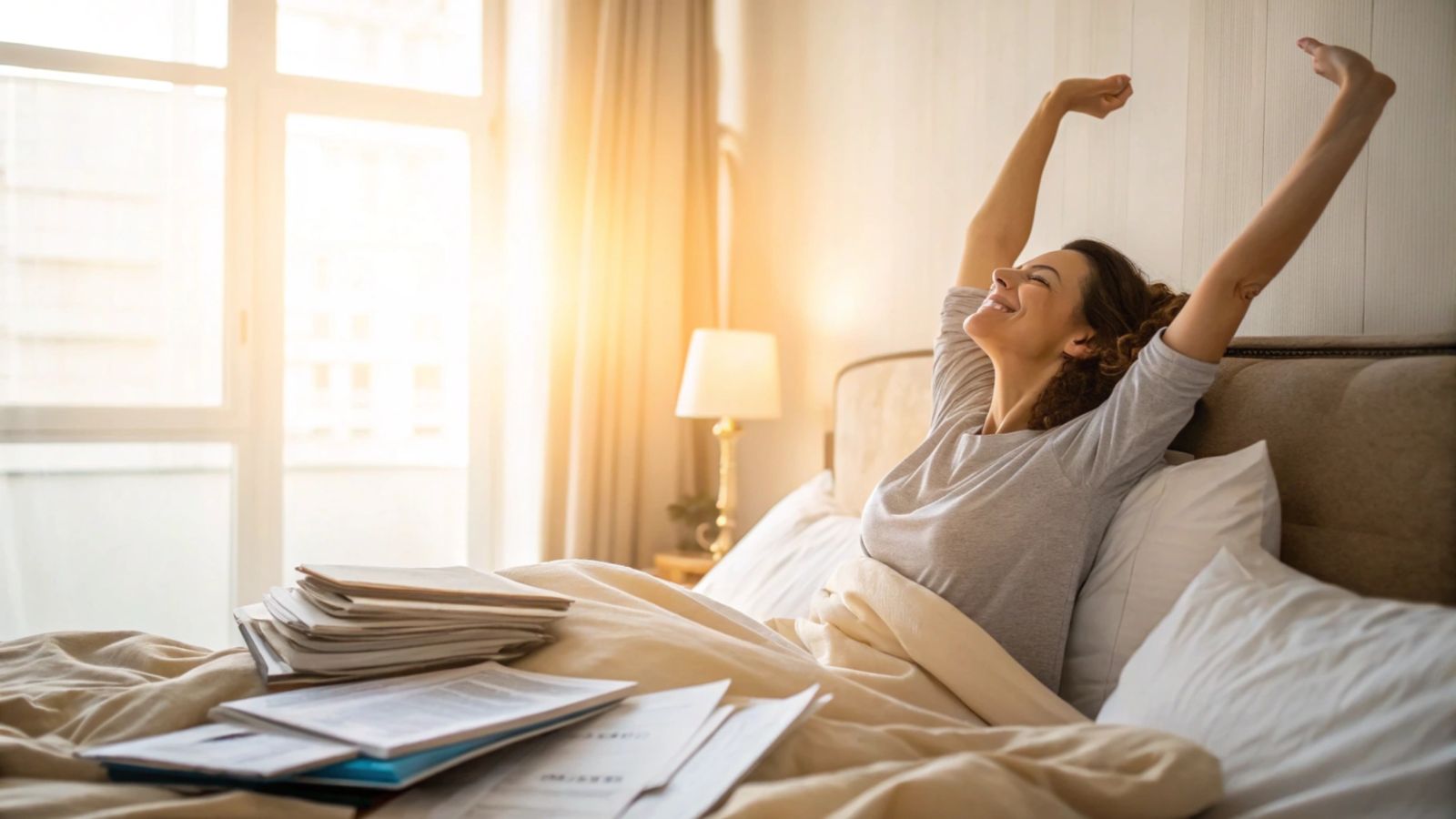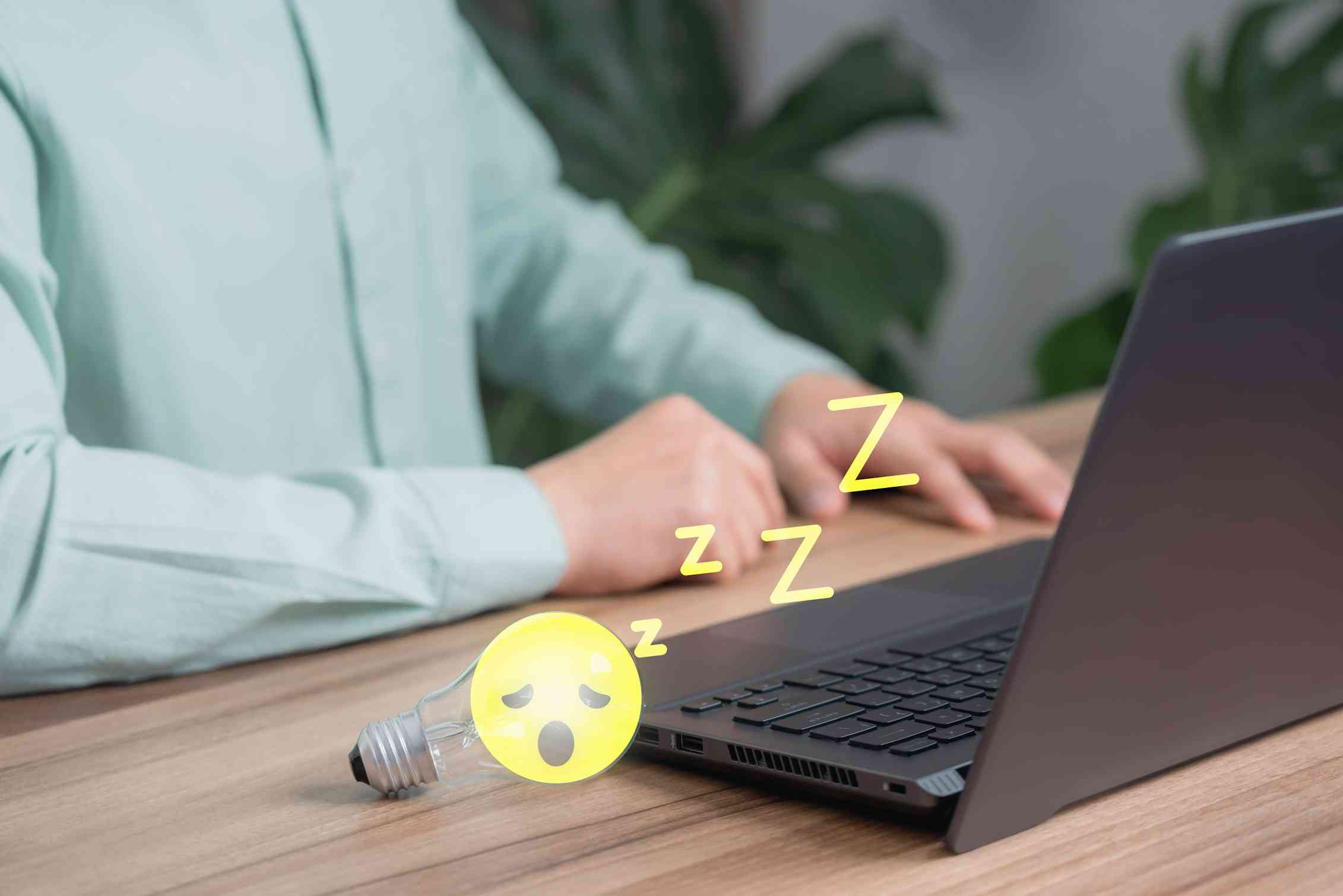Does the night really bring advice? 💡
Published by Adrien,
Source: The Conversation under Creative Commons license
Other Languages: FR, DE, ES, PT
Source: The Conversation under Creative Commons license
Other Languages: FR, DE, ES, PT
Follow us on Google News (click on ☆)
They say a good night's sleep helps us see things more clearly. Is this claim justified, and why? And what about naps—do they count?
John Steinbeck, the American author best known for his novel *The Grapes of Wrath*, once said: "It is common for a problem difficult at night to be resolved in the morning after the committee of sleep has worked on it." And Steinbeck is not the only one who claimed to have made great progress during sleep—it's also true for Einstein and Mendeleev, among others.

Recent studies on the science of sleep seem to support these claims.
More thoughtful decisions after a night of sleep
A 2024 study suggests, for example, that sleep can help us make more rational and better-informed decisions, avoiding the influence of misleading first impressions. To demonstrate this, researchers from Duke University in the United States invited participants to take part in a flea market game.
During the experiment, participants rummaged through virtual boxes full of items for sale, most of little value, with a few treasures hidden among them. After searching through several boxes, the participants were asked to pick their favorite box and earn a cash reward equivalent to the value of the items it contained.
When asked to choose a box immediately, participants tended to judge the boxes not based on their overall content but rather on the first items they found. In other words, these participants were excessively influenced by the initial information they received and struggled to integrate later information into their decision.
Participants who were allowed to make their choice the following day after sleeping made more rational decisions, and the order in which they discovered the items in the box no longer seemed to influence their choices.
Is a sleeping brain worth two?
Sometimes, a difficult problem seems impossible, a real dead end.
A study conducted in 2019 demonstrated that participants could be helped to solve a challenging problem the next day after their initial attempt by listening to sounds related to the unsolved problem during their sleep.

Our creativity benefits from a bit of sleep.
ParinPix/Shutterstock
In this experiment, participants were tasked with solving a series of puzzles. During the resolution of each puzzle, a unique sound was played in the background. At the end of the testing session, researchers gathered all the unsolved puzzles; then, the sounds associated with some of the unsolved puzzles were played during the sleep of certain participants.
The next morning, participants returned to the lab to retry solving the puzzles they had failed the previous day. The success rate was higher for puzzles whose sounds had been played overnight, suggesting that the sounds had prompted the sleeping brain to work on solving those puzzles.
One way in which sleep can help us solve problems is by uncovering relationships between objects and/or events. A 2023 study tested this idea.
Researchers asked participants to learn associations between four different elements (an animal, a place, an object, and a food item) related to an event described to them by the researchers. Some associations were obvious—for example, item A was directly associated with item B. Other associations were indirect: for instance, item D was never directly associated with items A or C.
The research team found that participants were more likely to discover these indirect associations (for example, noticing the subtle link between item A and item D) after a night of sleep than if they had remained awake. This suggests that sleep enabled participants to better understand the underlying structure of the event.
Taking naps to boost creativity
Thomas Edison, who contributed to the invention of the light bulb, often took naps during the day to stimulate his creativity, even though he claimed to sleep no more than four hours per night.
When Edison took his naps, he would fall asleep holding a ball in his hand. As he drifted off, his hand would relax, causing the ball to fall to the ground and wake him with a start. He, along with other famous thinkers like Salvador Dali, claimed that it was precisely this transitional state—the moment between wakefulness and sleep—that fueled their creativity.
In 2021, French scientists tested Edison's claim. Participants were asked to attempt solving a math problem that had a hidden rule, knowledge of which would enable a much quicker solution.
After working on the problem, participants napped like Edison, holding a cup that would drop if they fell asleep. Then, the participants were re-tested on the math problem. The researchers found that participants who reached a light sleep stage were more likely to uncover the hidden rule than those who stayed awake or those who progressed into deeper sleep while holding the cup.
During this transition between wakefulness and sleep, many participants reported experiencing hypnagogia, a semi-conscious state during the onset of sleep often filled with dream-like imagery.
In 2023, another group of researchers sought to determine whether the images perceived during this hypnagogic phase were linked to tasks performed by participants just before falling asleep. For instance, the task involved listing all the uses one could think of for a tree, including alternative and creative ones. Researchers found that the proposed uses were more creative when participants' visualizations during the transition to sleep involved trees, suggesting that the hypnagogic phase helped participants complete the task.
It turns out Edison was right: falling asleep fosters creativity. The night does indeed bring advice. And so do naps.